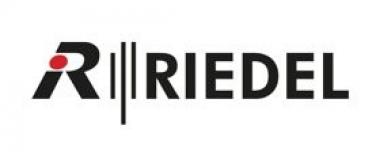Medizinprodukte-Branche in Europa wieder wettbewerbsfähig bekommen
Abbau komplexer Vorschriften und beschleunigte Genehmigungsverfahren: „Es geht ein Ruck durch Europa. Europa ist wieder auf Kurs“, sagte die baden-württembergische CDU-Europaabgeordnete Prof. Dr. Andrea Wechsler beim Online-Format „Aktuelle Stunde aus Brüssel“ des Bundesverbandes Medizintechnologie (BVMed) am 18. März 2025. Der Ruck sei nicht nur bei der EU-Kommission zu spüren. Er war nach Ansicht Wechslers auch bereits im Europaparlament spürbar. Ein Beispiel sei die Resolution des Parlaments zur Verbesserung der EU-Medizinprodukte-Verordnung (MDR) vom Oktober 2024. Bei diesem Thema erwartet die Europaabgeordnete in Kürze entsprechende Aktivitäten der EU-Kommission. Ihr Ziel: „Wir wollen die Medizinprodukte-Branche in Europa wieder wettbewerbsfähig bekommen. Aber wir müssen zügig handeln.“
Prof. Dr. Andrea Wechsler ist Juristin und seit 2024 Mitglied des Europäischen Parlaments für die CDU Baden-Württemberg. Sie ist Mitglied im Ausschuss für Industrie, Forschung und Energie sowie stellvertretendes Mitglied in den Ausschüssen Umweltfragen, Klima und Lebensmittelsicherheit (ENVI) sowie Beschäftigung und soziale Angelegenheiten (EMPL).
Die CDU-Europapolitikerin Wechsler betonte insbesondere die vorgesehenen Maßnahmen der EU-Kommission zum „Clean Industrial Deal“. Die Ziele des Green Deals sollen durch eine bessere Industriepolitik begleitet und erreicht werden. Positiv seien beispielsweise der Abbau komplexer Vorschriften, Energie-Versorgungssicherheit und niedrigere Energiekosten für die Unternehmen sowie eine bessere Wettbewerbsfähigkeit für die europäische Industrie, begleitet durch ein 100-Milliarden-Euro-Programm. Für die Healthcare-Branche sei nach Ansicht Wechslers zudem relevant, dass Genehmigungsverfahren für saubere Technologien mit Gesundheitsbezug beschleunigt werden sollen.
Bei den „Omnibus-Paketen“ für Bürokratieabbau betonte die EU-Politikerin, dass die Berichtspflichten aus den Nachhaltigkeits- und Sorgfaltspflichten-Regularien deutlich reduziert werden sollen. In der Lieferkette müsse nur noch die erste Stufe (Tier 1) berichtet werden. Zudem fallen 80 Prozent der jetzt erfassten kleineren Unternehmen durch neue Definitionen aus den Berichtspflichten heraus.
Zu den aktuellen Initiativen aus dem Arbeitsprogramm der EU-Kommission zur industrielle Gesundheitswirtschaft gehört zudem, dass die heimische Produktion gestärkt und auch in Krisensituation sichergestellt werden soll sowie eine Strategie zur Vorratshaltung von essenziellen medizinischen Produkten entwickelt wird.
In der Diskussion wiesen die Vertreter:innen von MedTech-Unternehmen darauf hin, dass die Einführung von Innovationen in Europa im Vergleich zu den USA deutlich zu lange benötige. Es gebe zwar noch gute Forschung in Europa, aber sie komme viel zu spät in der Versorgung an. MdEP-Wechsler sieht hier gute Ansatzpunkte bei den angedachten MDR-Verbesserungen, die müssten nun aber zügig umgesetzt werden.
Ein weiteres kritisches Thema sei die zukünftige Klassifizierung von Ethanol. Die MedTech-Branche warnt vor der geplanten Gefahreneinstufung von Ethanol durch ein aktuelles Verfahren der Europäischen Chemikalienagentur (ECHA). Eine verschärfte Einstufung würde sich gravierend auf die Herstellung wichtiger Arzneimittel und Medizinprodukte und damit auf die Versorgung von Patient:innen auswirken. Denn Ethanol sei in der Medizin und Hygiene unverzichtbar. So beschreiben die Unternehmen, dass Ethanol in Produktionsprozessen sowie in Desinfektionsmitteln, Arzneimitteln oder Medizinprodukten wirksam, sicher und unabdingbar ist. Die CDU-Europaabgeordnete hat diese Thematik auf dem Schirm und setzt sich dafür ein, dass die Klassifizierungen „in Abhängigkeit von den Anwendungsbereichen“ erfolgen müsse.
Bei der aktuellen Diskussion um Zölle und Handelshemmnisse verwiesen die EU-Abgeordnete Wechsler und die MedTech-Unternehmen übereinstimmend auf die große Bedeutung des humanitären, menschenzentrierten Ansatzes, der in Nordamerika und Europa bislang vorherrsche und nicht verloren gehen dürfe. Die MedTech-Branche setzt sich in dafür ein, dass Medizinprodukte von geplanten Zollinitiativen oder anderen handelsbeschränkenden Maßnahmen ausgenommen werden, um den Zugang von medizinischem Personal und Patient:innen zu für die Versorgung kritischen Medizinprodukten nicht zu gefährden.
Bundesverband Medizintechnologie BVMed
































